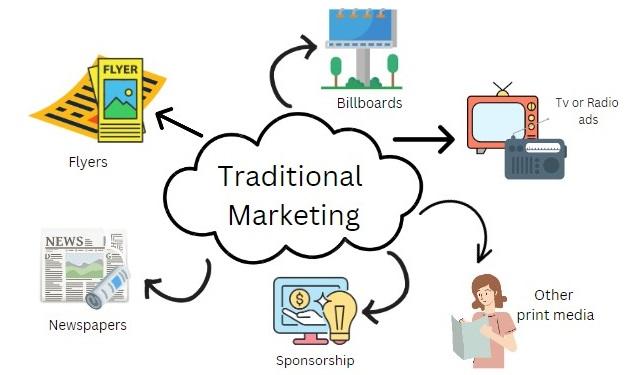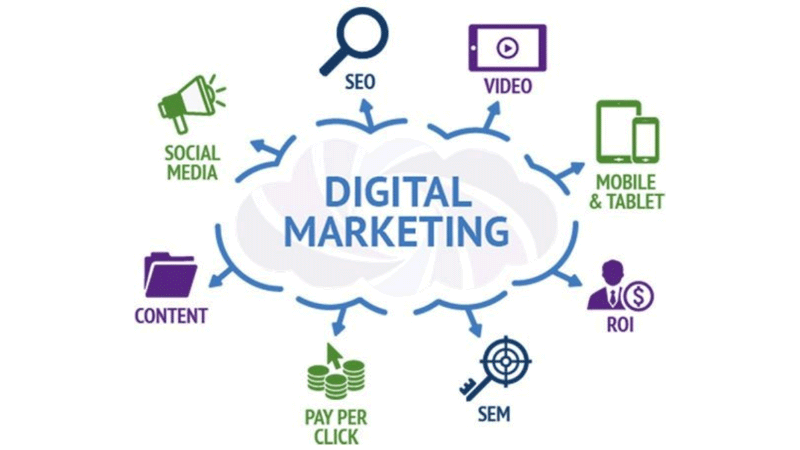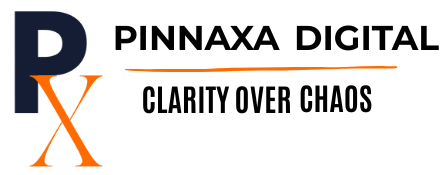Marketing has always been the backbone of business growth. For decades, traditional marketing methods like TV ads, print media, and billboards dominated the industry. But with the rise of technology and the internet, digital marketing has reshaped the way brands connect with their audience.
At Pinnaxa Digital, we believe that understanding the differences between traditional marketing and digital marketing is the first step for businesses aiming to grow smarter and faster. Our vision is rooted in optimism—leveraging the power of digital tools to deliver measurable, result-driven strategies that empower businesses to succeed.
What is Traditional Marketing?
Traditional marketing refers to the offline methods businesses have used for decades to reach their audience. This includes:
- Newspaper and magazine ads
- TV and radio commercials
- Flyers, brochures, and posters
- Billboards and outdoor advertising
- Telemarketing
While effective for creating brand awareness, these methods are often expensive and difficult to measure in terms of ROI.

What is Digital Marketing?
Digital marketing uses the internet and digital platforms to connect businesses with their customers. Some popular strategies include:
- Search Engine Optimization (SEO) – Optimizing websites to rank higher on search engines
- Social Media Marketing – Engaging audiences through platforms like Instagram, Facebook, and LinkedIn
- Performance Marketing – Running ROI-focused campaigns on Google Ads and Meta Ads
- Email Marketing – Building long-term customer relationships through personalized emails
- Content Marketing – Creating blogs, videos, and infographics to inform and attract prospects
At Pinnaxa Digital, we specialize in crafting tailored digital solutions that are not just creative but also data-driven, ensuring every marketing rupee delivers impact.

Key Differences Between Digital Marketing and Traditional Marketing
| Aspect | Traditional Marketing | Digital Marketing |
|---|---|---|
| Reach | Local & regional | Global & targeted |
| Cost | High (TV, print, outdoor) | Flexible & cost-effective |
| Targeting | Broad audience | Highly specific (demographics, interests, behavior) |
| Engagement | One-way communication | Two-way interaction (social media, chatbots) |
| Measurability | Hard to measure ROI | Real-time analytics & reports |
| Flexibility | Static campaigns | Dynamic, adaptable strategies |
Why Digital Marketing is the Future
Unlike traditional marketing, digital channels offer instant measurability, precise targeting, and cost flexibility. Small businesses can now compete with bigger players through smart strategies. Instead of relying on guesswork, data-driven insights allow brands to make informed decisions and maximize results.
At Pinnaxa Digital, our result-oriented approach ensures that every campaign is designed to drive measurable growth. We combine creativity with analytics, helping businesses not only reach their audience but also convert them into loyal customers.
Final Thoughts
Both traditional and digital marketing have their strengths, but the future belongs to digital. It provides a level playing field, allowing businesses of all sizes to connect, engage, and grow without boundaries.
At Pinnaxa Digital, our vision is optimistic—we see digital marketing as a powerful enabler for small and medium businesses to achieve their full potential. With a focus on innovation, strategy, and measurable outcomes, we aim to transform marketing into a growth engine for every brand we work with.

